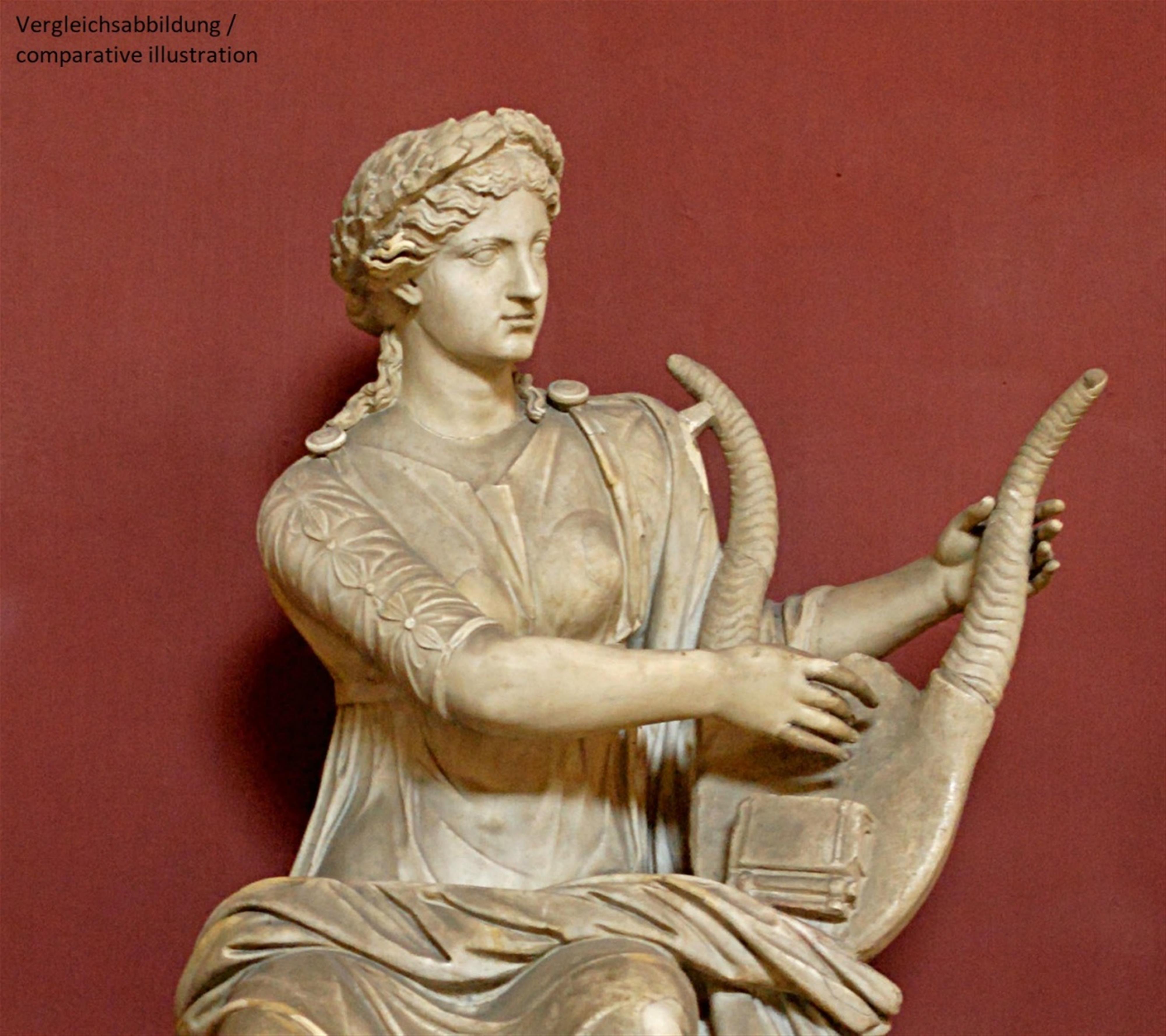Henri Martin
Muse à la lyre
Circa 1890
Oil on canvas 97 x 104 cm Framed. Monogrammed 'HGM' (joined) in dark blue lower right. - In very fine condition.
This outstanding work from the early, symbolist phase of Henri Guillaume Martin's oeuvre was presumably created as a commissioned work for a collector from Toulouse. Martin was himself born in Toulouse and studied at the art academy there before continuing his education in Paris. A voyage to study and work in Italy brought decisive artistic impulses: the light of the Mediterranean and the coloration of Italian frescoes made their way into his neo-impressionist work.
From 1890, symbolist tendencies shaped his painting: Martin primarily dealt with allegorical themes, realising them within light-filled compositions in soft colours, and his manner of painting moved closer to pointillism. The nine Muses - who, according to ancient mythology, held their protecting hands over the fine arts and science - occupied a particularly prominent place among his subjects.
Identified by means of her instrument as Terpsichore or Erato, the Muses of choral poetry and the dance and of erotic poetry respectively, our “Muse à la lyre” served to provide artistic and intellectual inspiration. She presents herself not as one of the ethereally anonymous, girlish figures from Martin's other depictions of the Muses but as an adult, serious musician with individual facial features that call a portrait to mind. The lyre prominently occupies the centre of the painting, the compositional unit consisting of the instrument and musician is shifted to the front edge of the picture and the light-filled springtime forest forms an evocative backdrop. In her seated position, the figure resembles a 2nd-century, ancient Roman marble sculpture of Terpsichore to be found in the Pio-Clementine collection of antiquities in the Vatican Museums (see comparative illus.), which Martin could have seen during his journey to Italy.
Certificate
We would like to thank Marie-Anne Destrebecq-Martin for kind confirmation.
Provenance
Collection Marsan, Toulouse; Collection De Montbel, Paris; Private collection, Switzerland




